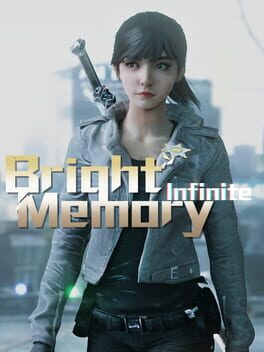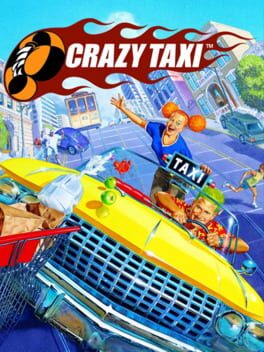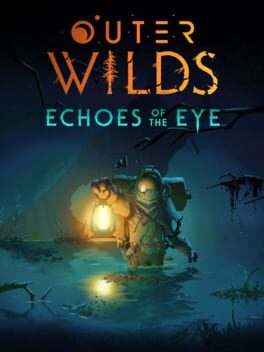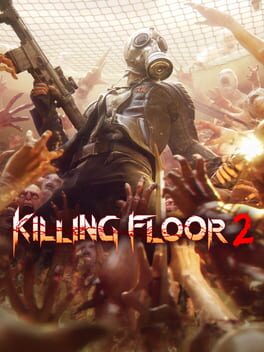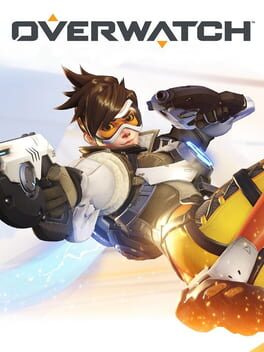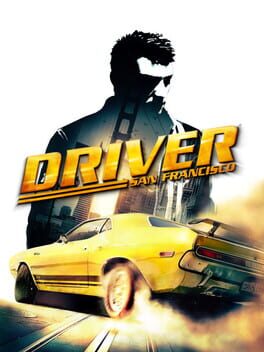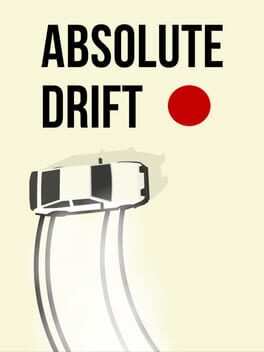Santieur52
BACKER
96 Reviews liked by Santieur52
Unpacking
2021
This dopey trout has three pairs of underwear and five hundred journals. What are you writing about? Swamp ass?
What's fairly interesting to me about this game is the ambient storytelling explored as you progress through the acts. What the faceless and wordless protagonist chooses to bring with her and return to as she travels through time, and the wear & tear they each experience as they cling to their passions through young adulthood. A fresh new undecorated house offering you free reign to personalise as if you've just bought a new Habbo Hotel apartment would often be preceded by a move with roommates, where the living space is shared and belongings need to be negotiated and respected. Unpacking really can be surprisingly stressful for a game that purports itself to be a zen little experience.
What ultimately holds the game back for me is the bizarre rules you're made to follow before a level counts as clear. As the last box is unfurled, red highlights activate throughout the house and they rarely ever seem to be for good reason - you can't even leave mugs on coasters.
What's fairly interesting to me about this game is the ambient storytelling explored as you progress through the acts. What the faceless and wordless protagonist chooses to bring with her and return to as she travels through time, and the wear & tear they each experience as they cling to their passions through young adulthood. A fresh new undecorated house offering you free reign to personalise as if you've just bought a new Habbo Hotel apartment would often be preceded by a move with roommates, where the living space is shared and belongings need to be negotiated and respected. Unpacking really can be surprisingly stressful for a game that purports itself to be a zen little experience.
What ultimately holds the game back for me is the bizarre rules you're made to follow before a level counts as clear. As the last box is unfurled, red highlights activate throughout the house and they rarely ever seem to be for good reason - you can't even leave mugs on coasters.
That nonexistent game that a random kid plays on an X360 with a PS4 controller in a random movie. randomly made up for that random movie. Almost metatextual.
It looks like a remake of 007 Nightfire, constantly changing (that section in the fancy spy car with built-in missile launcher) and moving with ideas "borrowed" from absolutely every fps that has had relative impact. from the approach to the kinesthetic gunplay and set-pieces of Infinity ward and Raven software, through the parkour of Digital illusions and Respawn entertainment, to the powers of attraction and gravitational push of Chinese online shooters, and, of course, also Dark Souls lol. All in one, mixed and scrambled. A tasteless aesthetic mashup that finds a meaning like a rabbit hole towards a wonderland that fits as a prima, with all the influences in plain sight and without a defined aesthetic identity that personally inspire me with a certain tenderness, since although they denote a lack of personality At times, their ideas to create mechanical mashups with the ideas of others end up on interesting grounds by not having the need to innovate or be accountable to a public that demands "innovation" or "essence", and perhaps this is not the case, and if , this game is fetishist for the purest technical muscle.
Zack Snyder would like it.
It looks like a remake of 007 Nightfire, constantly changing (that section in the fancy spy car with built-in missile launcher) and moving with ideas "borrowed" from absolutely every fps that has had relative impact. from the approach to the kinesthetic gunplay and set-pieces of Infinity ward and Raven software, through the parkour of Digital illusions and Respawn entertainment, to the powers of attraction and gravitational push of Chinese online shooters, and, of course, also Dark Souls lol. All in one, mixed and scrambled. A tasteless aesthetic mashup that finds a meaning like a rabbit hole towards a wonderland that fits as a prima, with all the influences in plain sight and without a defined aesthetic identity that personally inspire me with a certain tenderness, since although they denote a lack of personality At times, their ideas to create mechanical mashups with the ideas of others end up on interesting grounds by not having the need to innovate or be accountable to a public that demands "innovation" or "essence", and perhaps this is not the case, and if , this game is fetishist for the purest technical muscle.
Zack Snyder would like it.
Forza Horizon 5
2021
Pretty much the same experience as Horizon 4 - if you liked that, you've got more waypoints to hold RT to & from. I sadly get nothing out of this, and its desperate cloying attempts to wrangle a drop of dopamine from me all fail too. People give rpgs a bad rep for the whole "number go up" thing, but this could not feel more like time wasted while being hypnotised by a laserlightshow of exp bars and increasing integers that progress towards nothing. Far too many player retention systems draped over a racing game that is overly saccharine in tone and too scared to thrill. The challenges just aren't interesting and the cars don't even feel that good, what am I missing here? This is what all the dialogue sounds like https://i.imgur.com/i1TOMt2.png
Sick beyond belief of open worlds where I have no idea whether the tasks are procedurally or community generated. A barren expanse of a world map dotted with prefab roads and obstacles that the course designer has to fruitlessly negotiate with for any texture. Maybe I'm just down on this franchise for whatever weird or petty reason, it just gives me the same joy as being toured around a Toyota dealership. Psychotic UI, too; why do we want our system navigation to look like a moodboard. Perfectly competent, very pretty, but I don't have 122gb to spare for a game that is only adequate lol.
Sick beyond belief of open worlds where I have no idea whether the tasks are procedurally or community generated. A barren expanse of a world map dotted with prefab roads and obstacles that the course designer has to fruitlessly negotiate with for any texture. Maybe I'm just down on this franchise for whatever weird or petty reason, it just gives me the same joy as being toured around a Toyota dealership. Psychotic UI, too; why do we want our system navigation to look like a moodboard. Perfectly competent, very pretty, but I don't have 122gb to spare for a game that is only adequate lol.
Super Metroid
1994
The original Metroid was lonesome, oppressive, alien. This sequel is atmospheric but friendlier, familiar. It’s less a hostile world and more a videogame space, domesticated by map rooms, recharge stations, and save points. This Metroid cares.
The player is guided through seemingly open environments at a steady clip, but without the threat of loss, without real risk, it’s just the same old metroidvania story: empowerment articulated through space. A world fit exactly to your need.
It’s a fine game, a thoughtful sequel, but a lesser experience. This may still be many players’ idea of great game design. It’s not mine.
The player is guided through seemingly open environments at a steady clip, but without the threat of loss, without real risk, it’s just the same old metroidvania story: empowerment articulated through space. A world fit exactly to your need.
It’s a fine game, a thoughtful sequel, but a lesser experience. This may still be many players’ idea of great game design. It’s not mine.
Metroid
1986
Un espacio complejo a resolver y conquistar. Lleno de trampas, pasadizos, recovecos y secretos que de verdad son secretos.
Es gracioso que la crítica más repetida a este juego sea que presenta un mapa obtuso, donde es difícil orientarse, demasiado abierto desde el principio, con caminos sin salida, salas idénticas que se confunden y bucles que te devuelven al punto de partida. Un juego en el que es fácil perderse... ¿Pero no es ese el punto? Nos estamos infiltrando en una base secreta de piratas espaciales, qué menos que nos obliguen a orientarnos y descubrir el camino por nuestra cuenta. Orientación espacial y experimentación con los recursos a nuestro mano.
¿Lo malo? La acción no acompaña a la exploración. Se ha repetido mucho que el salto flotante busca reflejar la sensación de baja gravedad. Lo que no me convence de este argumento es el control aéreo absolutamente digital. Saltar en el espacio te pide algo mucho más analógico. Solo hay que ver vídeos de astronautas dando brincos en la luna para entender esto. Me cuesta ver este salto como una decisión voluntaria y no como una incapacidad de programar un desplazamiento espacial minimamente interesante. Que el equipo de desarrollo fuese R&D1(Super Mario Land e Ice Climbers entre otros) parece confirmármelo. Cuando en un plataformas de acción falla el movimiento, arrastra consigo el combate, y Metroid no es excepción. De nuevo, habrá quien diga que el que sea tan malo es decisión voluntaria para general incomodidad e indefensión, pero es una canción que suena demasiado a "los controles de tanque contribuyen a generar terror". Aun con eso, la acción resultaría pasable si no se intercala con aburridas sesiones de farmeo.
El resultado es un juego que apunta a obra maestra pero se queda por el camino. Una aventura de exploración y conquista de un espacio alienígena sin elementos de acción a la altura que refuercen una genuina sensación de indefensión, de sentirse superado por un entorno hostil.
Es gracioso que la crítica más repetida a este juego sea que presenta un mapa obtuso, donde es difícil orientarse, demasiado abierto desde el principio, con caminos sin salida, salas idénticas que se confunden y bucles que te devuelven al punto de partida. Un juego en el que es fácil perderse... ¿Pero no es ese el punto? Nos estamos infiltrando en una base secreta de piratas espaciales, qué menos que nos obliguen a orientarnos y descubrir el camino por nuestra cuenta. Orientación espacial y experimentación con los recursos a nuestro mano.
¿Lo malo? La acción no acompaña a la exploración. Se ha repetido mucho que el salto flotante busca reflejar la sensación de baja gravedad. Lo que no me convence de este argumento es el control aéreo absolutamente digital. Saltar en el espacio te pide algo mucho más analógico. Solo hay que ver vídeos de astronautas dando brincos en la luna para entender esto. Me cuesta ver este salto como una decisión voluntaria y no como una incapacidad de programar un desplazamiento espacial minimamente interesante. Que el equipo de desarrollo fuese R&D1(Super Mario Land e Ice Climbers entre otros) parece confirmármelo. Cuando en un plataformas de acción falla el movimiento, arrastra consigo el combate, y Metroid no es excepción. De nuevo, habrá quien diga que el que sea tan malo es decisión voluntaria para general incomodidad e indefensión, pero es una canción que suena demasiado a "los controles de tanque contribuyen a generar terror". Aun con eso, la acción resultaría pasable si no se intercala con aburridas sesiones de farmeo.
El resultado es un juego que apunta a obra maestra pero se queda por el camino. Una aventura de exploración y conquista de un espacio alienígena sin elementos de acción a la altura que refuercen una genuina sensación de indefensión, de sentirse superado por un entorno hostil.
Metroid Dread
2021
I wrote about the game on my blog: https://t.co/NGbwf3DVnv?amp=1
Metroid Dread follows the path of its predecessors in the Game Boy Advance: Zero Mission and Fusion. I mention these, and not Super Metroid, because of the intent of turning the movement of the protagonist, Samus, into an action figure. Up to Super Metroid there still was the purpose simulating a journey on an unknown planet through discovery of secrets and the simulation of low gravity. However, from Fusion onwards, this would disappear by reducing aerial maneuverability and softening the feeling of Samus attacking and facing enemies. The readjustment of the Melee Counter mechanic that was introduced in Samus Returns to be able to be executed during movement instead of having to stop first in order to transition smoothly between counterattacks and running manifests this understanding of what Metroid means to Mercury Steam.
However, the developers show serious problems when creating an action game due to the negligent design of its obstacles. The biggest issue comes from the generic enemies, which lack an aggressive behavior that poses a challenge. From the very first instant one can perceive, even though the game insists otherwise, that Samus's power is too high for the fauna, and this repercutes in Metroid Dread being uncapable of taking advantage of its possibilities in movement or interaction with the enemies to defend from or overcome them. Only shooting them repeatedly (later with a charged shot) is necessary to advance through the world, instead of having to use the Melee Counter to avoid being defeated, or using Samus's agility to find spaces and avoid attacks accordingly, and the more mechanics the game adds, such as invisibility, or a quick dodge mechanic, the more this discrepancy accentuates. This basic design pales in comparison to the action of the original game from 1986, where mastering the low gravity in the jump mechanic, the low health and the low might of basic resources encouraged the player to control the aerial space to avoid waves of enemies that actively reacted to your position on the screen, and to attack with precision with the missiles to preserve ammunition, thus resulting in a higher attention to the scenery to perform better in combat, which the new game lacks.
The sections where the player will probably be defeated are limited to boss battles and the E.M.M.I. zones, which are areas guarded by robots that chase after the protagonist and eliminate her if the player fails at quick-time events. However, both sections have disadvantages that undermine their impact on the player. Even though boss fights allow the player to unfold Samus's abilities, which was lacking in usual combat, there's a basic schematization of the bosses' behavior that turn the action sequences in less reaction, and more following patterns. In most cases, battles are reduced to avoid telegraphed attacks until the weak point is revealed or reached. Avoid Kraid's spheres and attack him once you can reach his mouth. Reduce the water level to expose Drogyga's weak point in order to attack them. Wait until the Chozo Soldier comes close and jump over them to attack from behind. Avoid the final boss's attacks until you can use the Melee Counter on him. Repeatedly. The result is that the player has a clear idea that the boss is an already intuitively solved puzzle, and what remains is merely executing the appropriate commands, which reduces their impact as an imposing menace and turns them into one task to follow, not very different to the limited, artificial boss design in The Legend of Zelda: Ocarina of Time.
As for the E.M.M.I., Mercury Steam appropriately decided to give the robots the capability to follow Samus through rooms and detect her at distance, and their presence force the player to keep moving to get out of the robot's detection range. However, the method that the developers chose to make the E.M.M.I. intimidating is the instant defeat of the player, a simple addition to generate tension. The problem is that developers seem to fear that it is a source of frustration, and the solution they apply destroy its communicative capability: The robots are only active on pre-established, easily recognizable areas, which limit their potential to keep the player at unease through the whole game because they're predictable, and the portion of the game that they are relevant on is reduced. Furthermore, the game even includes checkpoints at the entrance of these areas to avoid losing progress whenever the player is instantly defeated. Such implementation feels underwhelming in comparison to Clock Tower, a 1995 game for the Super Famicom, which is an horror game where the murderer can immediately defeat the female protagonist, but the possibility of the stalker appearing at every part of the house, as well as being able to follow the player everywhere they could hide at offers a minimal incentive to act carefully through the whole playthrough to avoid being detected. By counterpart, it does not matter in Metroid Dread if Samus enters into the E.M.M.I.'s radar because the player can get out of the area, and it does not matter if the protagonist is caught because she respawns two screens behind to try again. The "dread" that the title professes is nothing more than a slap in the wrist.
The game's apologists will suggest that Metroid Dread is nothing about what I mentioned, but rather an exploration game where action is secondary to present a new world. Leaving aside that such an affirmation ignores the evidence of Mercury Steam's intent and previous involvement in the Lords of Shadow linear action games, it is difficult to talk about exploration and discovery when the game guides Samus through a defined sequence and gives her the ability to see hidden blocks, and it is hard to think of a convincing world when everything, from upgrades to new paths or enemies to be defeated with the new weapon are conveniently placed in the player's way. The idea that Metroid Dread's developers seem to have of alternate paths is merely blocking the path behind that the player just went through, and forcing them to go through the place from another side to reach a new opening through a door available with the new upgrade as a convenient excuse to use it. This decision reveals the intention to keep the illusion of non-linear progress through a circular structure in order to appease the fans, but a camouflaged hallway is still a hallway.
Maybe the best aspect in Metroid Dread has nothing to do with dread, exploration, or action, but rather a very small element that is not talked about in publicity stunts, and that is the varied amount of warp points. Usually in this genre, whenever the player finds access to a new area, there is a small sense of anticipation and curiosity for the new localization ahead. How will it be? What will I do there? What will I find? In Metroid Dread there are numerous points to teleport Samus to different points on different areas, which usually lead to places that were hidden before, and these are not merely limited to the corners of each area but could be on any part of the map. Through this the game manages, at least during these instants, to create an actual sense of uncertainty on how this discovery will change the player's understanding of places that they have seen before, and this detail puts this game above the condescendence of the Game Boy Advance games, which deprived the player of these feelings by indicating them exactly where to go or even what they are going to find. Interconnecting the world in this way probably is an already explored idea in fangames, but it is a concept that deserves to be further explored in the genre.
A lot has been commented about the circumstances behind the development of the game, particularly not crediting workers that stopped participating during production, but perhaps the most ignominious aspect of this situation is that even in consciousness of what Mercury Steam did, and with full conviction on how bad it was, there is a lack of audacity in games criticism to give a rigorous perspective on Metroid Dread in order to act as fanatics of a brand instead.
Metroid Dread follows the path of its predecessors in the Game Boy Advance: Zero Mission and Fusion. I mention these, and not Super Metroid, because of the intent of turning the movement of the protagonist, Samus, into an action figure. Up to Super Metroid there still was the purpose simulating a journey on an unknown planet through discovery of secrets and the simulation of low gravity. However, from Fusion onwards, this would disappear by reducing aerial maneuverability and softening the feeling of Samus attacking and facing enemies. The readjustment of the Melee Counter mechanic that was introduced in Samus Returns to be able to be executed during movement instead of having to stop first in order to transition smoothly between counterattacks and running manifests this understanding of what Metroid means to Mercury Steam.
However, the developers show serious problems when creating an action game due to the negligent design of its obstacles. The biggest issue comes from the generic enemies, which lack an aggressive behavior that poses a challenge. From the very first instant one can perceive, even though the game insists otherwise, that Samus's power is too high for the fauna, and this repercutes in Metroid Dread being uncapable of taking advantage of its possibilities in movement or interaction with the enemies to defend from or overcome them. Only shooting them repeatedly (later with a charged shot) is necessary to advance through the world, instead of having to use the Melee Counter to avoid being defeated, or using Samus's agility to find spaces and avoid attacks accordingly, and the more mechanics the game adds, such as invisibility, or a quick dodge mechanic, the more this discrepancy accentuates. This basic design pales in comparison to the action of the original game from 1986, where mastering the low gravity in the jump mechanic, the low health and the low might of basic resources encouraged the player to control the aerial space to avoid waves of enemies that actively reacted to your position on the screen, and to attack with precision with the missiles to preserve ammunition, thus resulting in a higher attention to the scenery to perform better in combat, which the new game lacks.
The sections where the player will probably be defeated are limited to boss battles and the E.M.M.I. zones, which are areas guarded by robots that chase after the protagonist and eliminate her if the player fails at quick-time events. However, both sections have disadvantages that undermine their impact on the player. Even though boss fights allow the player to unfold Samus's abilities, which was lacking in usual combat, there's a basic schematization of the bosses' behavior that turn the action sequences in less reaction, and more following patterns. In most cases, battles are reduced to avoid telegraphed attacks until the weak point is revealed or reached. Avoid Kraid's spheres and attack him once you can reach his mouth. Reduce the water level to expose Drogyga's weak point in order to attack them. Wait until the Chozo Soldier comes close and jump over them to attack from behind. Avoid the final boss's attacks until you can use the Melee Counter on him. Repeatedly. The result is that the player has a clear idea that the boss is an already intuitively solved puzzle, and what remains is merely executing the appropriate commands, which reduces their impact as an imposing menace and turns them into one task to follow, not very different to the limited, artificial boss design in The Legend of Zelda: Ocarina of Time.
As for the E.M.M.I., Mercury Steam appropriately decided to give the robots the capability to follow Samus through rooms and detect her at distance, and their presence force the player to keep moving to get out of the robot's detection range. However, the method that the developers chose to make the E.M.M.I. intimidating is the instant defeat of the player, a simple addition to generate tension. The problem is that developers seem to fear that it is a source of frustration, and the solution they apply destroy its communicative capability: The robots are only active on pre-established, easily recognizable areas, which limit their potential to keep the player at unease through the whole game because they're predictable, and the portion of the game that they are relevant on is reduced. Furthermore, the game even includes checkpoints at the entrance of these areas to avoid losing progress whenever the player is instantly defeated. Such implementation feels underwhelming in comparison to Clock Tower, a 1995 game for the Super Famicom, which is an horror game where the murderer can immediately defeat the female protagonist, but the possibility of the stalker appearing at every part of the house, as well as being able to follow the player everywhere they could hide at offers a minimal incentive to act carefully through the whole playthrough to avoid being detected. By counterpart, it does not matter in Metroid Dread if Samus enters into the E.M.M.I.'s radar because the player can get out of the area, and it does not matter if the protagonist is caught because she respawns two screens behind to try again. The "dread" that the title professes is nothing more than a slap in the wrist.
The game's apologists will suggest that Metroid Dread is nothing about what I mentioned, but rather an exploration game where action is secondary to present a new world. Leaving aside that such an affirmation ignores the evidence of Mercury Steam's intent and previous involvement in the Lords of Shadow linear action games, it is difficult to talk about exploration and discovery when the game guides Samus through a defined sequence and gives her the ability to see hidden blocks, and it is hard to think of a convincing world when everything, from upgrades to new paths or enemies to be defeated with the new weapon are conveniently placed in the player's way. The idea that Metroid Dread's developers seem to have of alternate paths is merely blocking the path behind that the player just went through, and forcing them to go through the place from another side to reach a new opening through a door available with the new upgrade as a convenient excuse to use it. This decision reveals the intention to keep the illusion of non-linear progress through a circular structure in order to appease the fans, but a camouflaged hallway is still a hallway.
Maybe the best aspect in Metroid Dread has nothing to do with dread, exploration, or action, but rather a very small element that is not talked about in publicity stunts, and that is the varied amount of warp points. Usually in this genre, whenever the player finds access to a new area, there is a small sense of anticipation and curiosity for the new localization ahead. How will it be? What will I do there? What will I find? In Metroid Dread there are numerous points to teleport Samus to different points on different areas, which usually lead to places that were hidden before, and these are not merely limited to the corners of each area but could be on any part of the map. Through this the game manages, at least during these instants, to create an actual sense of uncertainty on how this discovery will change the player's understanding of places that they have seen before, and this detail puts this game above the condescendence of the Game Boy Advance games, which deprived the player of these feelings by indicating them exactly where to go or even what they are going to find. Interconnecting the world in this way probably is an already explored idea in fangames, but it is a concept that deserves to be further explored in the genre.
A lot has been commented about the circumstances behind the development of the game, particularly not crediting workers that stopped participating during production, but perhaps the most ignominious aspect of this situation is that even in consciousness of what Mercury Steam did, and with full conviction on how bad it was, there is a lack of audacity in games criticism to give a rigorous perspective on Metroid Dread in order to act as fanatics of a brand instead.
Metroid Dread
2021
I don't want to sound like a moralist or exercise armchair activism, but how long can you continue defending a game that has ended the careers of so many workers? So many devs abused while Nintendo and Mercury Steam get the accolades for creating another continuity metroid.
In case you don't know, mercury steam did not credit several devs who were dismissed improperly or were forced to leave the project due to force majeure, such as poor mental health or, I don't know, THE FUCKING PANDEMIC.
There is plenty of information on the internet about this and, hey, probably several of my favorite games were developed through Overworking, unfortunately in Japan it is common and surely, there will be similar or worse cases than that of metroid dread, but at a time when The fact that social conscience and mental health is such an important and controversial issue, I find it inconceivable that so many praises are given to a game perpetrated under the worst business practices I have seen in years, it is pure meritocracy.
Please, if you love a game, its perfectly okay, but do not defend it that if has been created under bad praxix and has screwed up the careers of some of its devs, on the contrary. Do not stain anyone's memory
In case you don't know, mercury steam did not credit several devs who were dismissed improperly or were forced to leave the project due to force majeure, such as poor mental health or, I don't know, THE FUCKING PANDEMIC.
There is plenty of information on the internet about this and, hey, probably several of my favorite games were developed through Overworking, unfortunately in Japan it is common and surely, there will be similar or worse cases than that of metroid dread, but at a time when The fact that social conscience and mental health is such an important and controversial issue, I find it inconceivable that so many praises are given to a game perpetrated under the worst business practices I have seen in years, it is pure meritocracy.
Please, if you love a game, its perfectly okay, but do not defend it that if has been created under bad praxix and has screwed up the careers of some of its devs, on the contrary. Do not stain anyone's memory
Crazy Taxi
1999
This review contains spoilers
Echoes of the Eye seems kind of like a square peg, round hole situation, to be honest. They wanted to tell this story about owl matrix and a prisoner, but had to fit it into the confines of the game they had already designed, and I dont think it worked.
I need to get more objective distance from it, but letting it sit with me so far, I think I Intensely Dislike the DLC, which I feel has nearly none of the elements that I liked about the base game. I just kinda wish I could forget I ever played it, and not so that I could play it again fresh like I wish I could do with the rest of the game. The initial puzzle of figuring out what and where The Stranger is is fantastic and straight out of vanilla OW, as well as the first couple times around the track as you greedily explore the surface world. It’s incredibly atmospheric; even the dream world is full of great atmosphere. But unlike the base game, there’s zero substance to any of it. In the DLC for the archaeological simulator, you learn nothing about the people on The Stranger nor what they were about. Other than they’re spooky horror aliens that communicate entirely via homemade found footage horror movies and jack into a big VR simulation of an early 2010s Slenderman fangame that you need to scour to assemble a strategy guide for. The goal of the whole thing is to find three sacred cheat codes, all to release a dude who’ll play the theremin.
The biggest problem is that it feels like an entirely different game stapled on top of Outer Wilds. OW’s biggest strength is that all these disparate areas that operate according to their own rules are cohesively tied together by a common set of systems and mechanics that work everywhere. Except in the DLC area, where none of the tools from the base game do anything, not even your knowledge of how to move your character around because you spend hours of it outside your suit slowly walking around in the dark. Even your rumour board stays blank because there are no rumours to learn. One of those mechanics in the base game and a fantastic piece of design work are the quantum laws, which are so consistently applied in so many places that you can just organically pick them up via osmosis. There are a few places in there where they give an explicit lesson if you need a little help, but most people I’ve talked to seem to figure out and apply at least one of them on their own, and it makes you feel like a brain genius. Here, they super transparently try to recreate that with a set of rigid laws within such a confined scale that solutions feel arbitrary and are often found by repeatedly beating the same brick wall.
I need to get more objective distance from it, but letting it sit with me so far, I think I Intensely Dislike the DLC, which I feel has nearly none of the elements that I liked about the base game. I just kinda wish I could forget I ever played it, and not so that I could play it again fresh like I wish I could do with the rest of the game. The initial puzzle of figuring out what and where The Stranger is is fantastic and straight out of vanilla OW, as well as the first couple times around the track as you greedily explore the surface world. It’s incredibly atmospheric; even the dream world is full of great atmosphere. But unlike the base game, there’s zero substance to any of it. In the DLC for the archaeological simulator, you learn nothing about the people on The Stranger nor what they were about. Other than they’re spooky horror aliens that communicate entirely via homemade found footage horror movies and jack into a big VR simulation of an early 2010s Slenderman fangame that you need to scour to assemble a strategy guide for. The goal of the whole thing is to find three sacred cheat codes, all to release a dude who’ll play the theremin.
The biggest problem is that it feels like an entirely different game stapled on top of Outer Wilds. OW’s biggest strength is that all these disparate areas that operate according to their own rules are cohesively tied together by a common set of systems and mechanics that work everywhere. Except in the DLC area, where none of the tools from the base game do anything, not even your knowledge of how to move your character around because you spend hours of it outside your suit slowly walking around in the dark. Even your rumour board stays blank because there are no rumours to learn. One of those mechanics in the base game and a fantastic piece of design work are the quantum laws, which are so consistently applied in so many places that you can just organically pick them up via osmosis. There are a few places in there where they give an explicit lesson if you need a little help, but most people I’ve talked to seem to figure out and apply at least one of them on their own, and it makes you feel like a brain genius. Here, they super transparently try to recreate that with a set of rigid laws within such a confined scale that solutions feel arbitrary and are often found by repeatedly beating the same brick wall.
Killing Floor 2
2015
Selected lyrics from the parody song I just wrote:
Keep the paranoid and justified
My God
They try to hide
Now Jesus is a dirty word
Who took God out of the news?
Took the people out of God
Who took God out of the schools?
Took the children from God
Rip children from the womb
Before they ever had a chance
To see they're alive
Stare into their unborn eyes
Who gives a shit about politics
I'd like to share a thing or two about heretics
You see, evil infiltrated our government
And it wears a masquerade of sentiment
I forgot to tell you that you can't pray at school
I hope that you know that you can pray after school
And please don't mention Christ on the job
Wonder why I'm feeling like I have been robbed
Just kidding, they're from Disunion Reconstructed, a song by Tripwire President John Gibson's Christian nu-metal band Dirge included on the Killing Floor 2 soundtrack!
Keep the paranoid and justified
My God
They try to hide
Now Jesus is a dirty word
Who took God out of the news?
Took the people out of God
Who took God out of the schools?
Took the children from God
Rip children from the womb
Before they ever had a chance
To see they're alive
Stare into their unborn eyes
Who gives a shit about politics
I'd like to share a thing or two about heretics
You see, evil infiltrated our government
And it wears a masquerade of sentiment
I forgot to tell you that you can't pray at school
I hope that you know that you can pray after school
And please don't mention Christ on the job
Wonder why I'm feeling like I have been robbed
Just kidding, they're from Disunion Reconstructed, a song by Tripwire President John Gibson's Christian nu-metal band Dirge included on the Killing Floor 2 soundtrack!
Overwatch
2016
“Nothing behind me, everything ahead of me, as is ever so on the road.”
― Jack Kerouac, On the Road
more like "DRIVERS" because although the main police drama revolves around a single protagonist, the truth is that thanks to a diegetically justified supernatural mechanics we will be able to possess any driver in the city and inhabit his vehicle with a single button, like a specter , a creative multi-level approach to changing vehicles that is often seen as it avoids the process of stopping / lowering and raising / starting a car, you only change cars while driving, simple pleasant and fast, but you also enter for a short time in the lives of those drivers; Maybe a rich mother who just bought her daughter a car, an engineer lamenting being an engineer with his brother-in-law, a kid training for a driver's license, a couple of cops on patrol, two Japanese brothers involved in a series of races illegal ... whatever you can think of, 150 characters (or something like that, dunno) in any case, the writing leads to very funny, imaginative and varied micro situations.
"sure, why not ?,"
It is a constant thought within the game, but always focused on movement, in contrast to other racers that look like high-end car porn, Driver: San Francisco is motion, and for the first time in a long time, I get excited driving, drifting alleys and I choreographed in the opposite direction, I no longer walk and just fly. i am true to the name "Driver.
Couple of thougths:
The world as a driving track and challenges has been explored on many occasions, but it has never been completely justified diegetically, nor has traffic been given so much importance as inhabitants. It is curious because when reinterpreting the world through a vehicle, perhaps giving importance to traffic as something more than fluctuating obstacles would be a cool idea.
Throughout the 20th century, San Francisco became synonymous with cultural experimentation and alternative thinking and the creativity with which this Driver takes the formal elements of open world driving games perfectly matches the description of this city.
― Jack Kerouac, On the Road
more like "DRIVERS" because although the main police drama revolves around a single protagonist, the truth is that thanks to a diegetically justified supernatural mechanics we will be able to possess any driver in the city and inhabit his vehicle with a single button, like a specter , a creative multi-level approach to changing vehicles that is often seen as it avoids the process of stopping / lowering and raising / starting a car, you only change cars while driving, simple pleasant and fast, but you also enter for a short time in the lives of those drivers; Maybe a rich mother who just bought her daughter a car, an engineer lamenting being an engineer with his brother-in-law, a kid training for a driver's license, a couple of cops on patrol, two Japanese brothers involved in a series of races illegal ... whatever you can think of, 150 characters (or something like that, dunno) in any case, the writing leads to very funny, imaginative and varied micro situations.
"sure, why not ?,"
It is a constant thought within the game, but always focused on movement, in contrast to other racers that look like high-end car porn, Driver: San Francisco is motion, and for the first time in a long time, I get excited driving, drifting alleys and I choreographed in the opposite direction, I no longer walk and just fly. i am true to the name "Driver.
Couple of thougths:
The world as a driving track and challenges has been explored on many occasions, but it has never been completely justified diegetically, nor has traffic been given so much importance as inhabitants. It is curious because when reinterpreting the world through a vehicle, perhaps giving importance to traffic as something more than fluctuating obstacles would be a cool idea.
Throughout the 20th century, San Francisco became synonymous with cultural experimentation and alternative thinking and the creativity with which this Driver takes the formal elements of open world driving games perfectly matches the description of this city.
Art of Rally
2020
The recent peak of the contrarian minimalist video game. it's weird that I never knew the differences between V engines until I played this game and didn't even have to touch any parts of the car
Perhaps that is the greatest virtue of Art of Rally, it makes you understand and become aware of the nuances of driving, the history of the rally summarized through this plastic model in the shape of a video game. It's arcade and it's simulation too, but nothing about to choose parts of the car and no driving action type mindless you just need precise math with your fingers and refined touch, just that.

